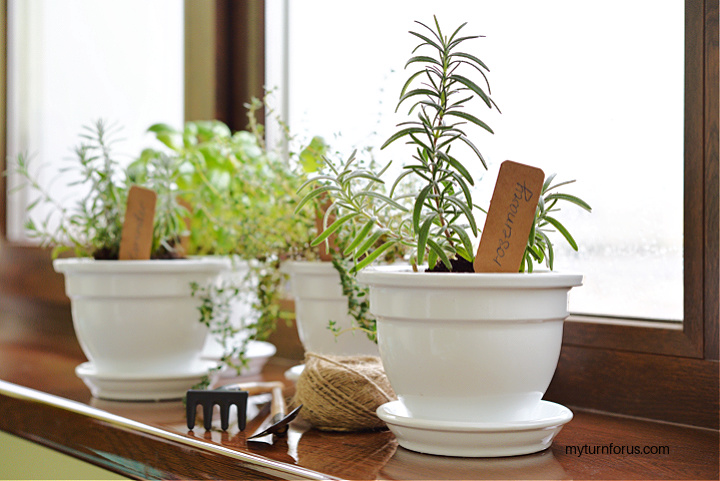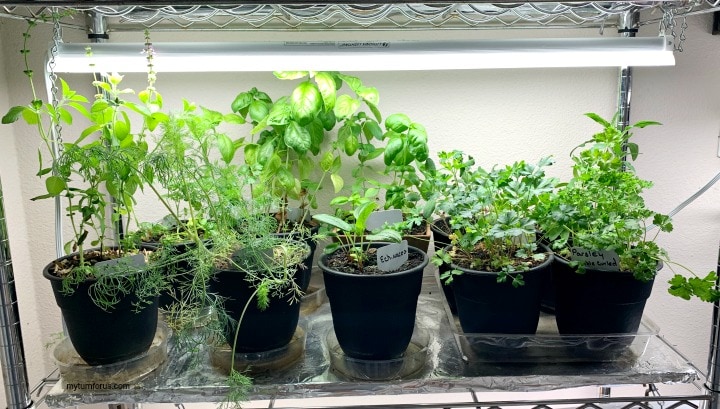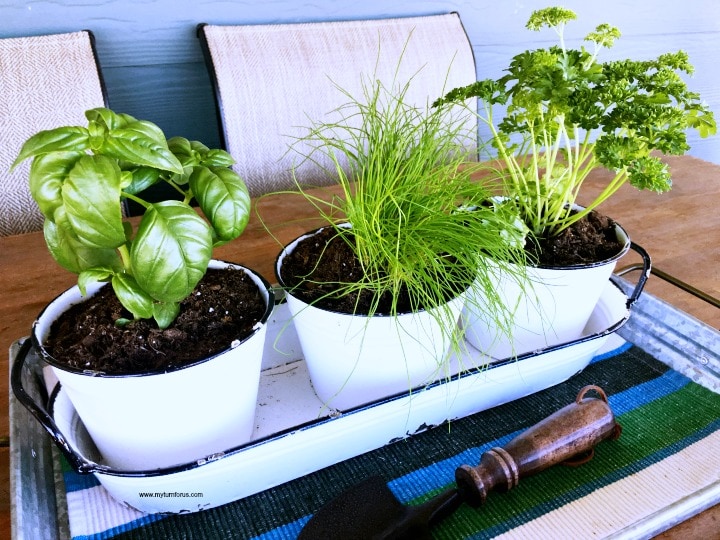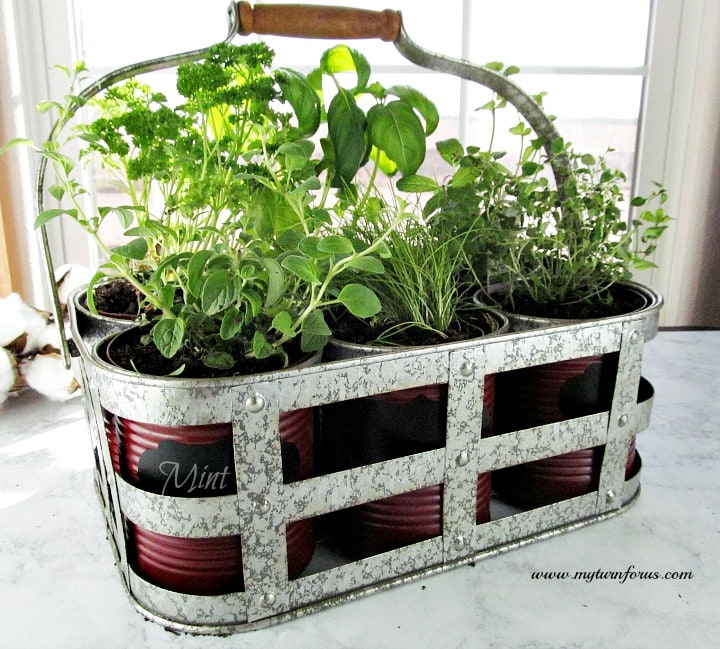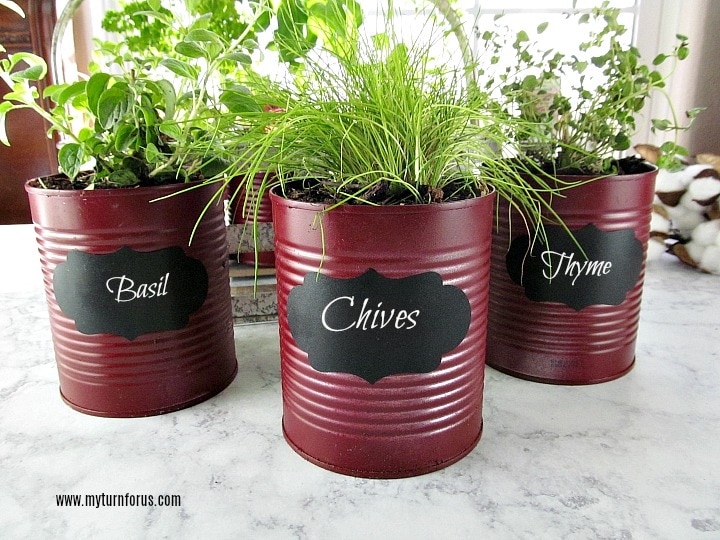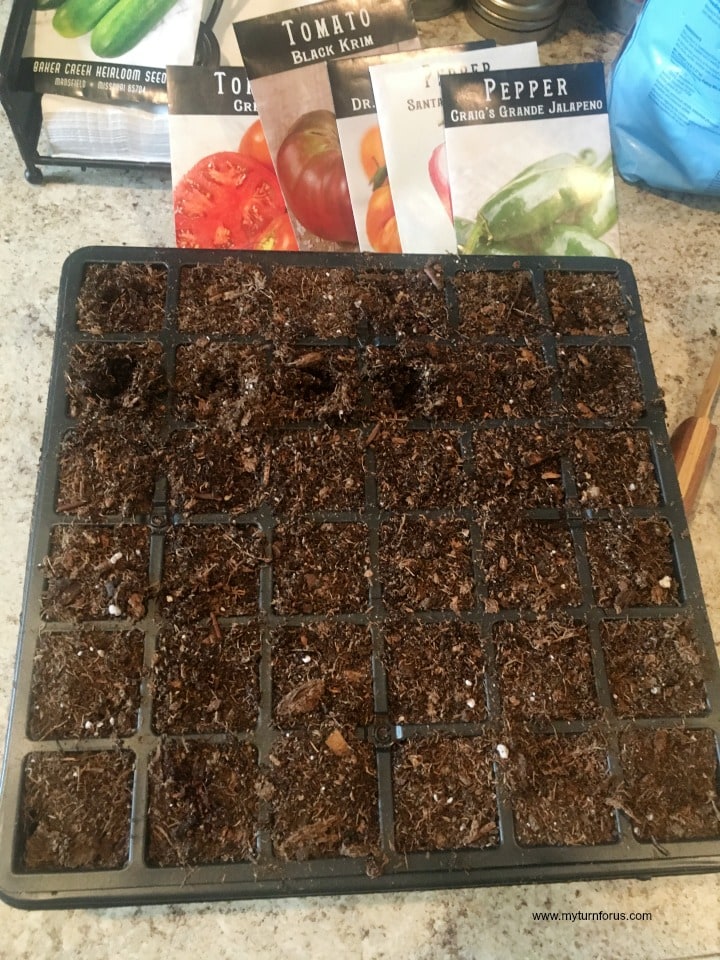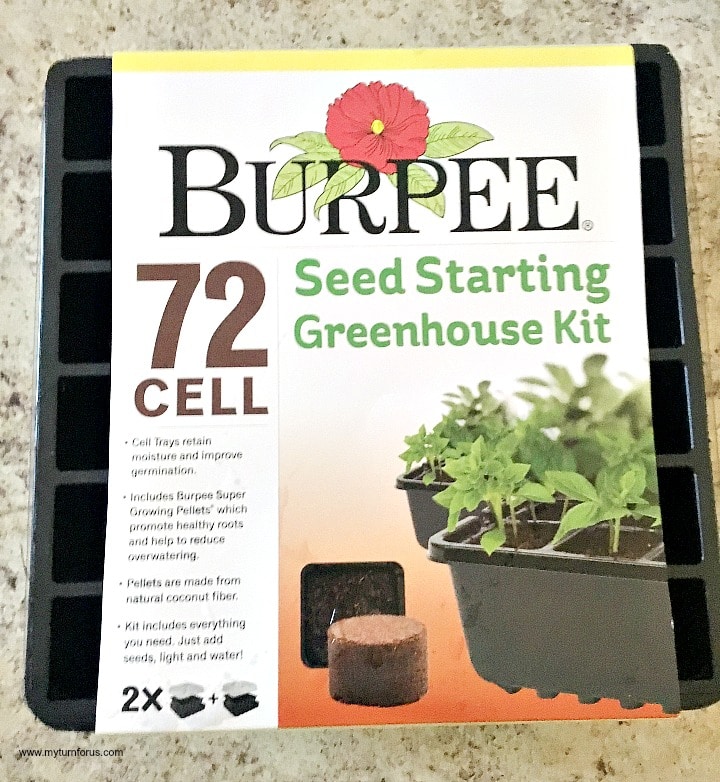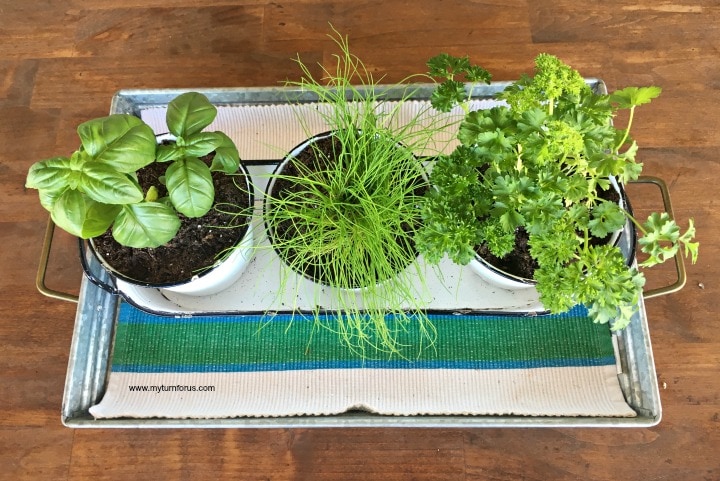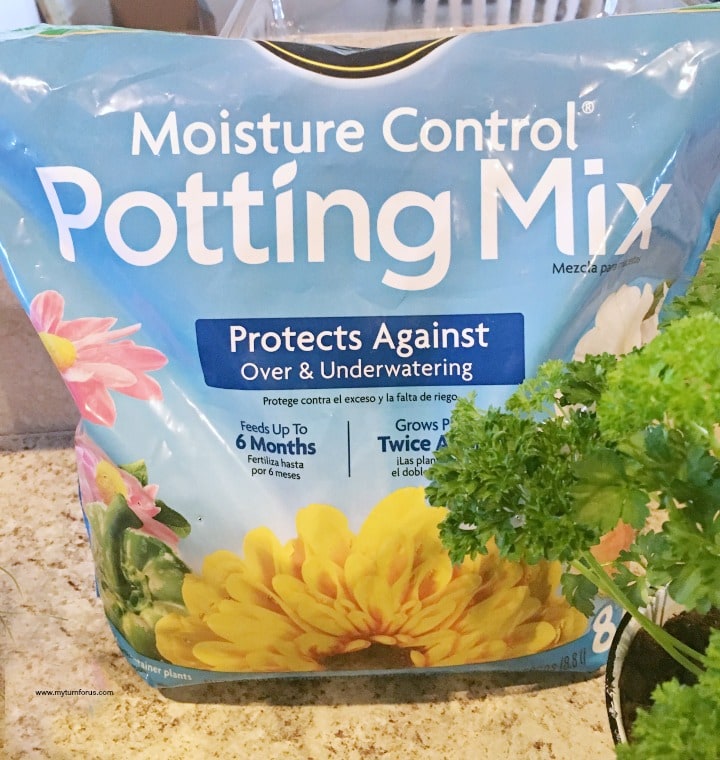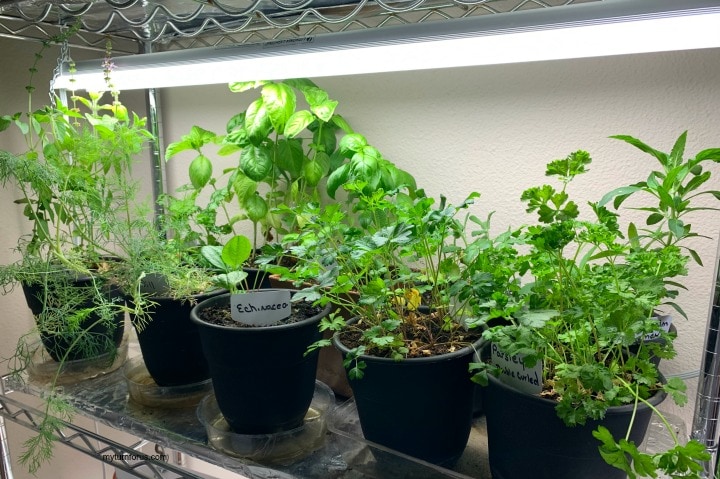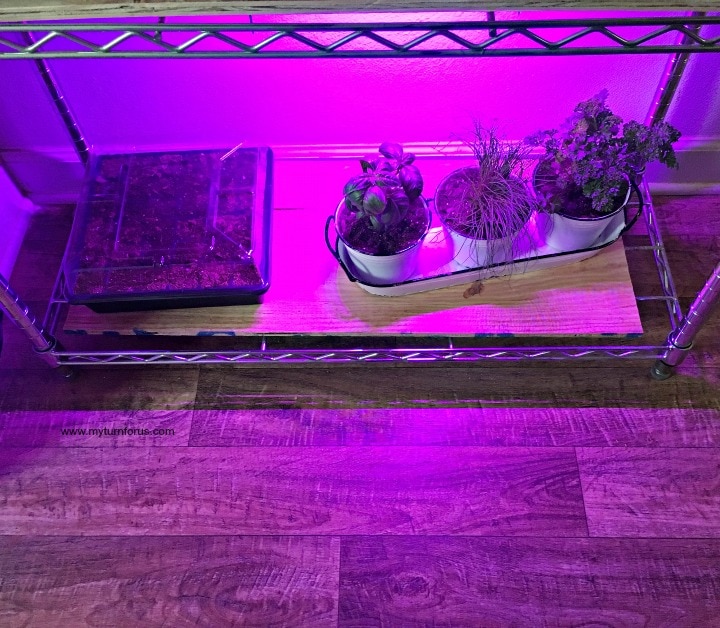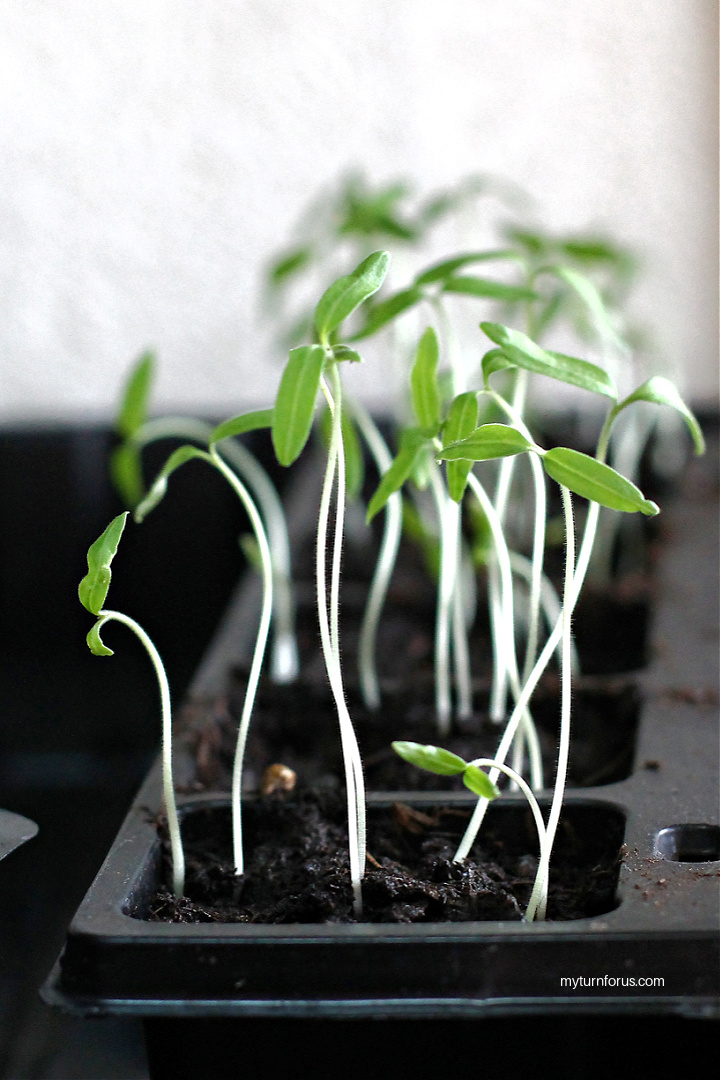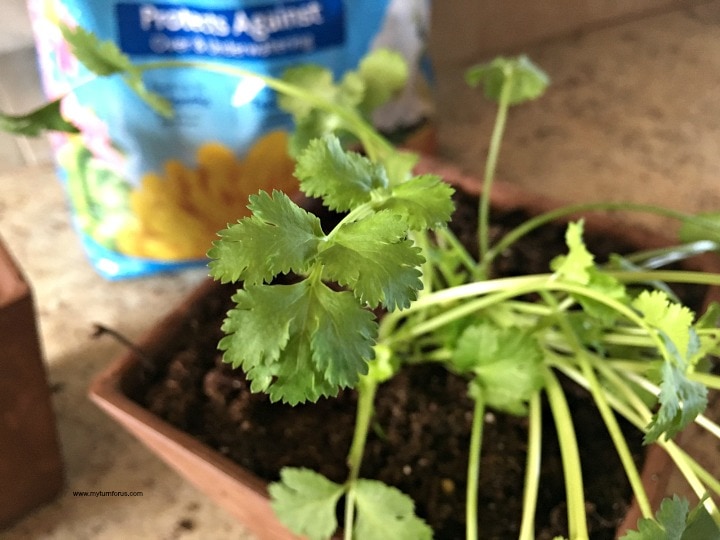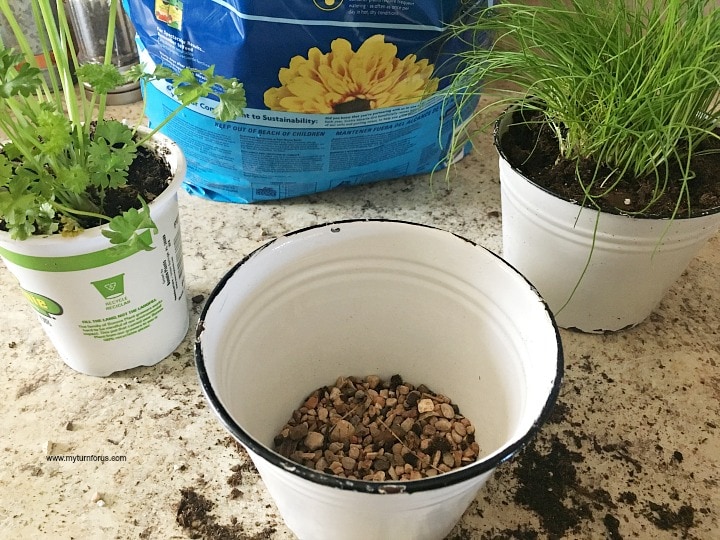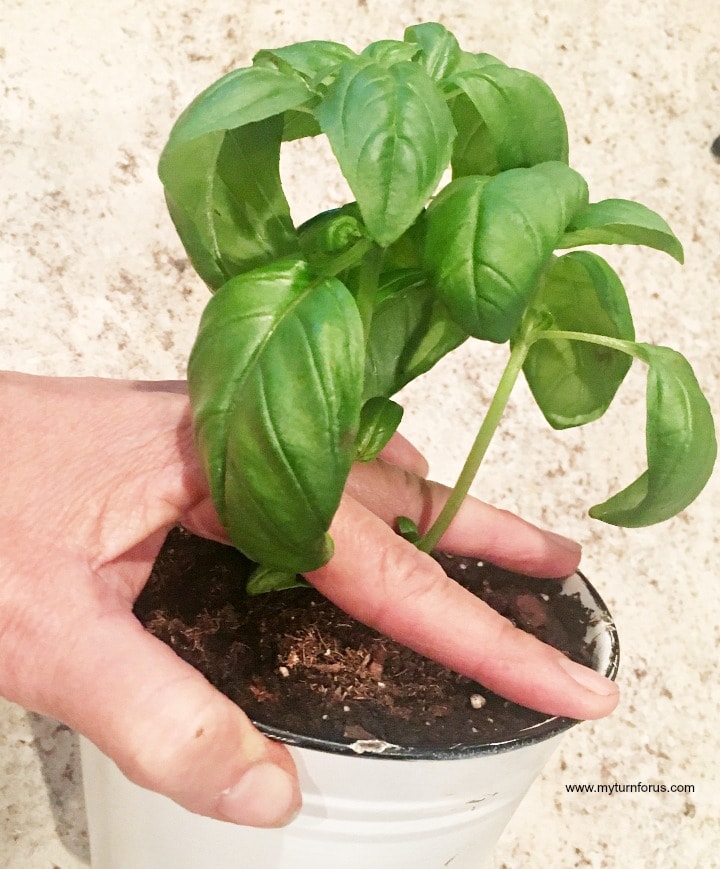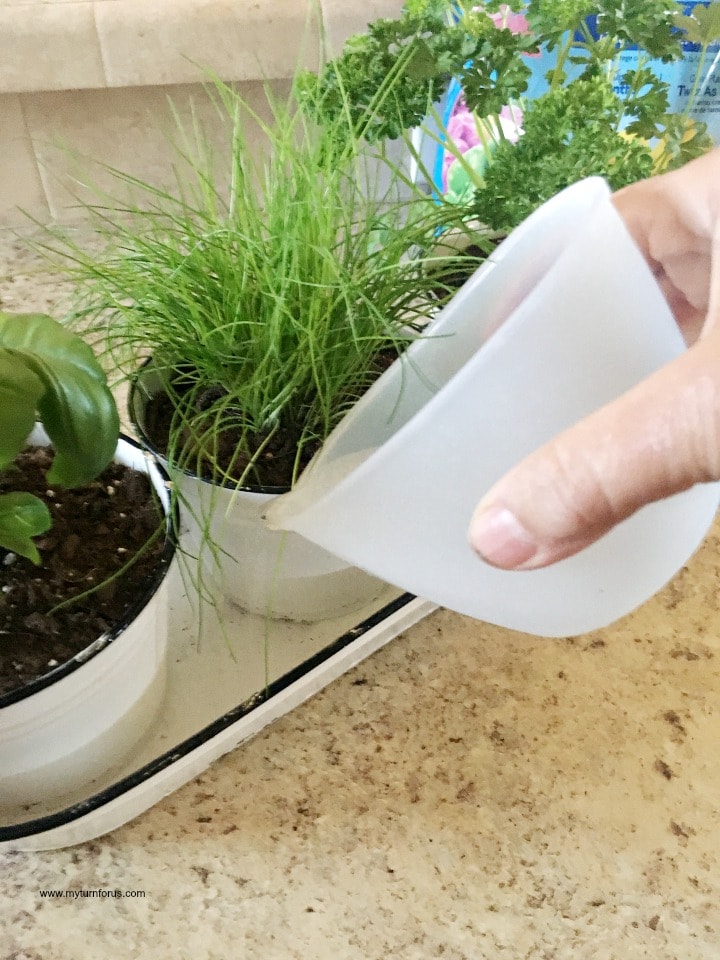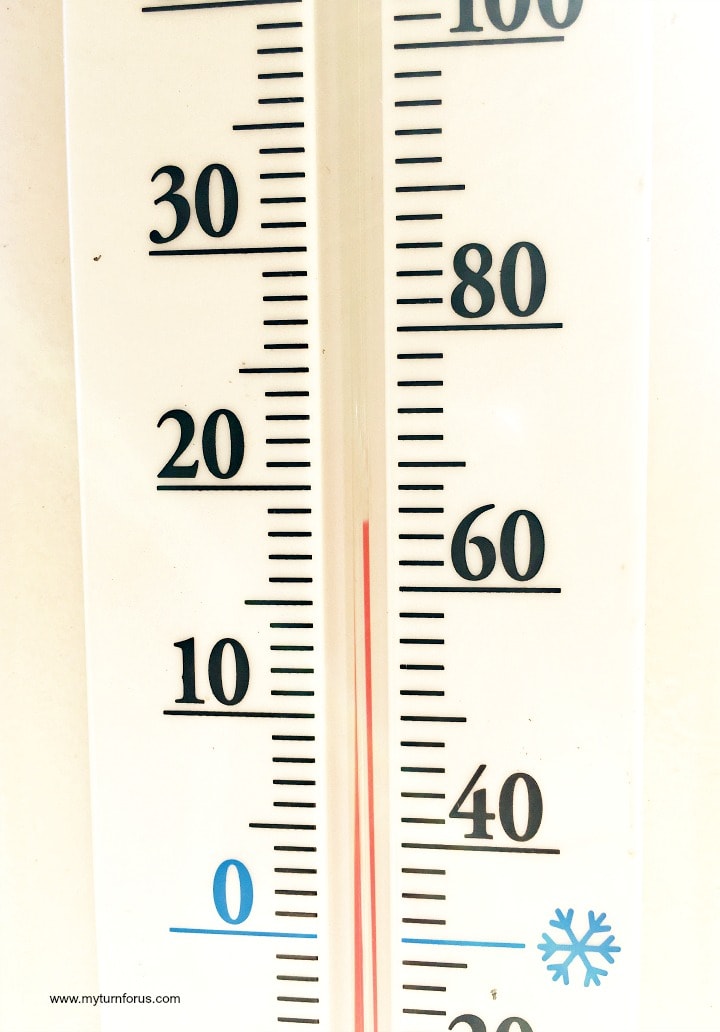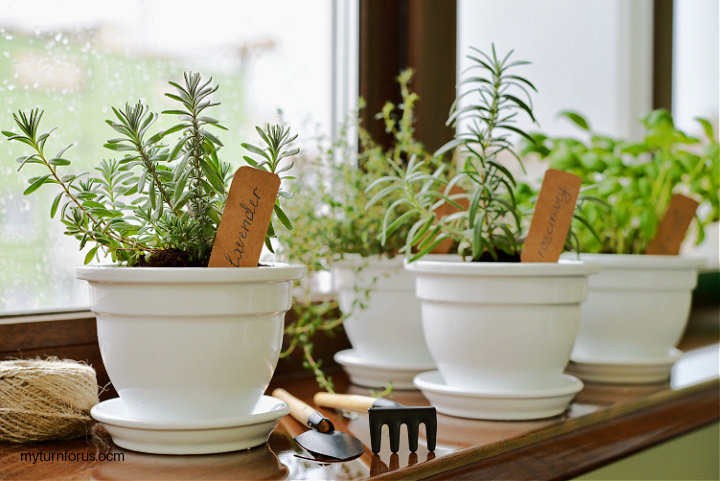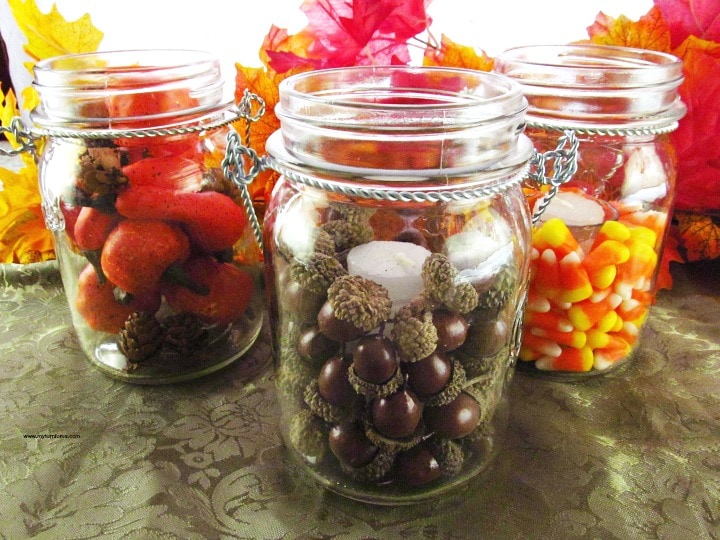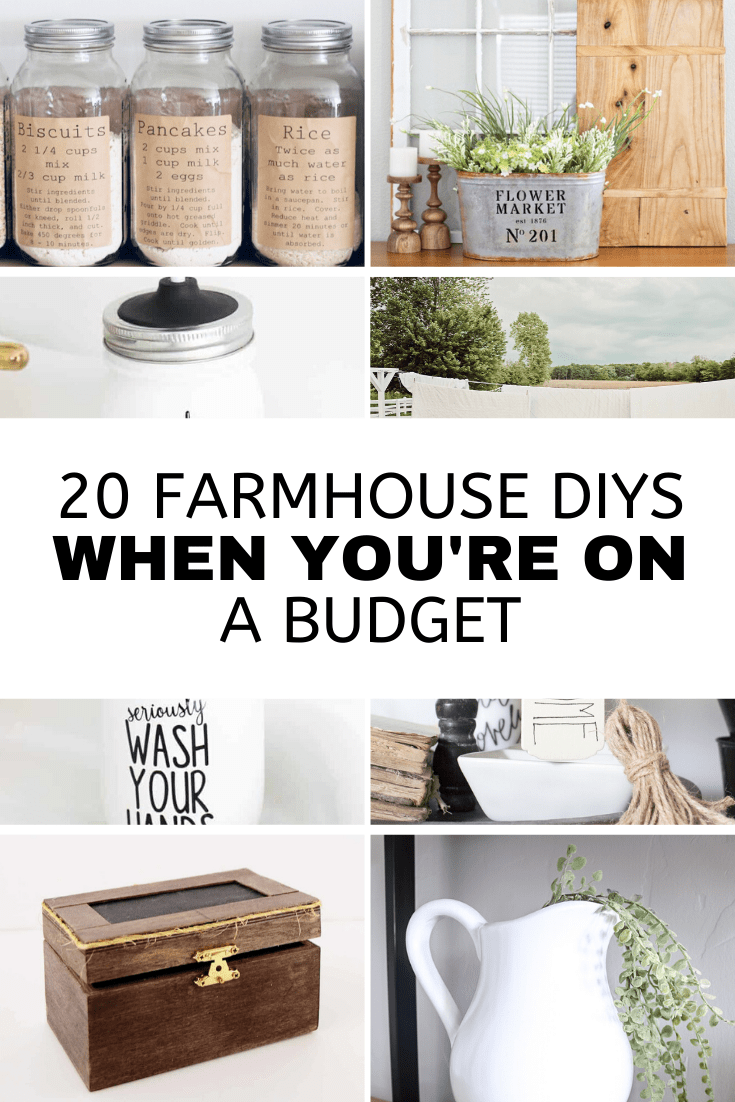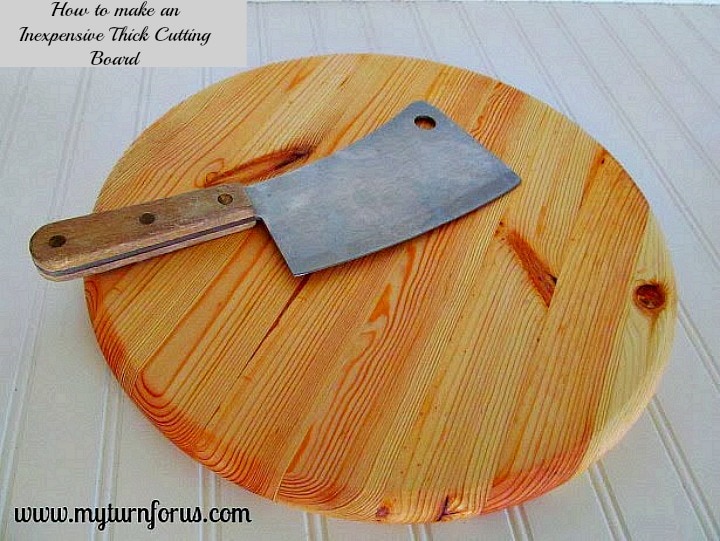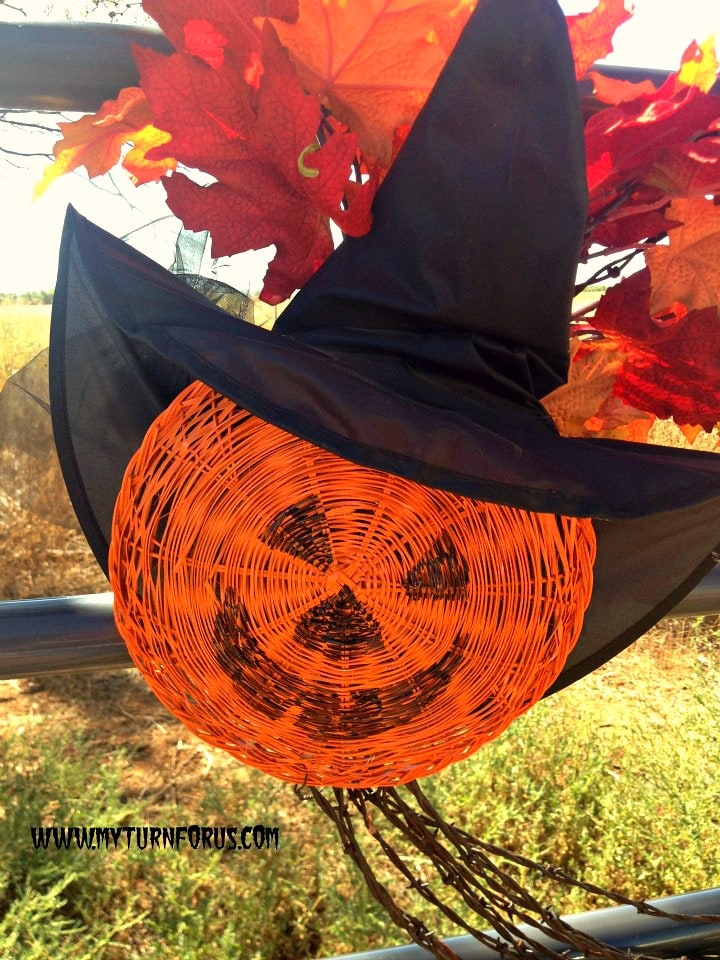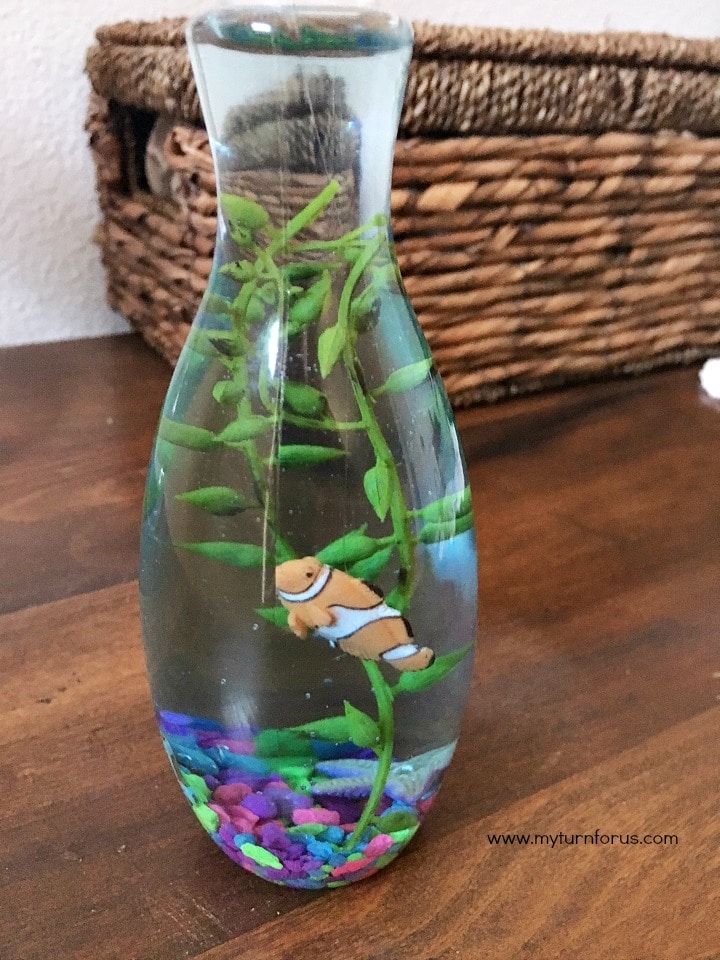How to have a successful indoor herb garden
See our tips on herb gardening for beginners and growing an indoor herb garden. Also how to plant and the most popular herbs for the best indoor herb garden for a summer or winter herb garden.
Every spring or to be perfectly honest, about in February, I start getting the planting itch. I can’t wait for winter to go away and to start digging in the dirt out in the garden. I love planting new little plants and dropping seeds into the rich earth. But since it’s still cold and we have several freeze warnings yet to come, that’s not going to happen soon. So the only thing that saves me is planting and harvesting my own indoor herb garden.
This post contains affiliate links which means if you make a purchase we might receive a small commission at no additional cost to you.
We always have a winter herb garden in the mudroom happily growing under a grow light. And you know that fresh herbs are a little pricey in stores. So it’s not only an enjoyment growing a winter herb garden but it saves us money. So our solution is to continue growing our little indoor herb garden. And it’s not just for winter, we use many of our herbs in recipes and teas all year round. So to help we have complied a few tips of herb gardening for beginners but for you more advanced gardeners, this is also very helpful.
If you enjoy Growing an Indoor Herb Garden then see these:
- Best DIY Backyard Projects and Garden Ideas
- Front Porch Ideas
- 24 Fairy Garden Ideas
- Free Garden Planner
Growing an Indoor Herb Garden
So not only does growing your own indoor herb garden gives you some natural ingredients to season up a favorite meal, but it can also add some color and life to your home. There are many reasons people opt to grow indoor herb gardens. But today I wanted to focus more on how to grow your own herbs indoors instead of why you should grow herbs indoors.
How do I start a small indoor herb garden?
Your indoor herb garden can be as large as your space allows and as large as you choose. So walk around your home and plan where you would like it. You could also have several pots of herbs in different locations of your home depending on the light. And there is nothing wrong in enjoying all the little pots of herbs around the home and then placing them under a grow light at night for additional light.
Or you could choose just one place for the entire indoor herb garden. It should preferably be near a south facing window for the maximum amount of light exposure. There are many Racks, cute shelf units or plant tables that can be purchased or moved around to accommodate it.
After you choose the location, then you can gather your herb containers together or purchase a matched set. It depends on the decor of your home or the utilitarian needs of the size of the plants you wish to grow. You could also recycle items to make a herb mobile garden such as this one we made last year as shown above. Or you could purchase just a set of cute pots as we did from Decor Steals.
How to plant an Indoor Herb Garden
Be certain to purchase quality plants to ensure your herbs will thrive. Healthy plants will have a higher percentage rate of growing continuously throughout the year. And you can start harvesting earlier. You need to always buy from a reputable herb grower and look for healthy green leaves and moist soil.
You may decide to grow your own herbs from seeds and that is an easy and an inexpensive option. We start several different herbs from seeds along with our garden vegetables. Before purchasing herb seeds, be sure to check the expiration date on the packages.
It’s always easier to purchase a grower tray to get seeds up and out of the ground faster. These herb grower trays have separate compartments with a tray under for water. And usually, they have a clear top to allow light in but keep moisture in. Follow the package directions for the best results.
But be sure that you have a separate pot for each type of herb. You won’t want to mix the herbs up into one container, they need to have their own space and container. And don’t forget the labels. We have several fun label ideas that are not only informative but also decorative.
Whether you opted to purchase a unique container or find containers around the home, an indoor herb garden can double as a new decor piece in your home. You could also build or buy a unique, decorative container to hold the pots.
What is the Best Potting Soil for Herbs?
Your herbs will need to have proper nutrients, so it’s best to pick up a high-quality potting mix to plant your herb seedlings or seeds in.
If we are planting seeds it best to buy a potting soil designed for seed starting such as this Seed Starting Potting mix.
Also, it’s always a great idea to use moisture control potting mix in an indoor herb garden. Sometimes a home can dry out plants more than one expects.
Do I need an Indoor Herb Grow Light?
Your first step to growing an indoor herb garden is to select an appropriate location inside that offers sunlight. Your herb garden will need access to sunlight and water on a regular basis. As with picking the right location, it’s important to know that an indoor herb garden needs at least 6 hours of sunlight per day.
If you do not have a sunny window that is acceptable, you may need to supplement with a grow light on cloudier days. Or you may need one all the time as we do.
You could install a grow light for your herb garden.
- Use a shop light (above) that is at least 1500-3000 lumens (measure of brightness) and 4500-6500 Kelvins (color of light)
- Use a specialty designed grow light and that is labeled as such (below)
And if you do not have sunny windows then I would simply recommend you get a high quality Grow Light. You might also need one to supplement natural lighting when cloudy weather hits.
**NOTE an important Fact: Make sure the plants are at least 2 inches from the light otherwise they will grow and become “leggy”. Leggy is when the little plants grow too fast to reach the light and their stems are not strong. We have had this happen and all our little tomato plants just fell over, they were just too weak to hold themselves up. So make your light adjustable or stack the plants on boxes to reach that light.
What are some of the best indoor herb garden herb plants?
Herbs to grow in your herb garden:
- Basil- is one of our favorites and it’s always so much better fresh, add it to any Italian dish or mix it with cubes of cheese, chopped tomatoes for Bruschetta.
- Chives- served freshly snipped as a topping for Best Baked Jacket Potatoes or our Twice Baked Potato Casserole.
- Parsley- Is always viewed as just a garnish but it can actually add flavor and it is known to aid in digestion.
- Cilantro- Oh the love and hate of cilantro. We cook a huge variety of Mexican Food Dishes and this little herb in a must in our house. Especially in our Homemade Pico de Gallo.
- Thyme- is always in our winter herb garden, it’s delicious in stews and a must on our Roast Chicken in a Clay Pot
- Oregano– another great herb that is a must in Italian food but also doubles oven in stews and soups and is always a great partner to basil
- Stevia- a natural sweetener that we use in teas
- Rosemary- another must for roast chicken and is a little harder to grow in an indoor herb garden. Because it is susceptible to dying inside due to lack of sunlight or too much water or not enough, it’s a little tricky to grow inside. A grow light and a good drainage system in the pot is a must for this plant.
- Sage- a must in our winter herb garden and we want plenty for our Thanksgiving Cornbread Dressing. But sage is delicious with just about any meat such as chicken, pork or beef.
What is needed for Planting and growing an Indoor Herb Garden
- Herb Plants or Herb seeds
- Seed Grower tray
- Pots
- Gravel
- Moisture Control Potting Soil
- Herb Racks or shelves
- Grow lights
- Herb harvesting scissors
Plant your Herbs with these 5 Simple Tips for herb gardening for beginners
These simple tips to start your own indoor herb garden will ensure that you get a large harvest of herbs this year. You can grow herbs indoors all year round by planting your family’s favorite pots of herb inside. Start slowly with an indoor winter herb garden and then expand to obtain the best indoor herb garden for you and your family.
Gravel- I always place a handful of gravel, about 1/2 inch, in the bottom of the pots. That is a controversial statement these days maybe because most potting soils are light and allow pots to drain natural. And you will find so many that say that gravel is not needed. But I add the gravel to prevent the soil from clogging the holes in the bottom of the planter. I don’t wish for the soil to fall out or to create a plug thus not allowing the plant to drain properly. Also, your indoor herb garden will need to be watered, but not too much. And as a means to avoid root rot, placing small rocks or gravel in the bottom of your plant container will give space from the water.
Adding Potting Soil and planting – Add a layer of good potting soil over the gravel. Carefully remove the herb plant from the commercial container by placing your hand over the top and allowing the plant to extend up between your fingers. Cupping the plant this way will protect it as you turn it over and carefully loosen up the container and remove it. Place the plant with the soil attached on top of the potting soil and gently pour soil around the plant and on top. Use your finger to press down around the plant to remove air pockets and pack the soil in. Add more potting soil as needed.
Watering- Place the potted plant inside a water tray or saucer. Add water to completely moisten the plant. Add just a little water in the bottom tray or saucer and check it the next day to adjust the water. We always water our plants from the bottom by adding water to the tray or saucer. It’s important to keep an eye on these new plants until you learn how much water is needed for your plant’s new environment. When using tap water your indoor herb garden may start to show slimy white salt build up. This means it’s time to flush them with water until the pot drains fully.
Lastly, you’ll want to be aware of how moist your indoor herbs are staying. Since you’re growing indoors, the air can be dryer than outside which means you need to keep an eye on moisture.
Also, herbs will need a fertilizer that is not applied to the greenery. Since we will be eating he leaves, we don’t wish for it to be contaminated with fertilizer. We use a Shake and Feed which is applied to the soil. Feed the amount according to the package container for your size herb pots.
Temperature- To have a successful harvest with an indoor herb garden you must maintain a temperature between 60-70 degrees Fahrenheit. This will ensure you grow high-quality herbs. It is always a good idea to place a small thermometer near your indoor herb garden and check it often.
Lighting- To grow a successful indoor herb garden is to select an appropriate location inside that offers sunlight. An indoor herb garden will need access to sunlight so a bright sunny south facing window is the best option. And it’s important to know that an indoor herb garden needs at least 6 hours of sunlight per day. If a window is not an option then a grow light is a must.
Following these tips will ensure you have the best summer or winter herb garden possible. Happy Gardening Folks!
Click HERE to save These Tips on Planting an Indoor Herb Garden to Pinterest


